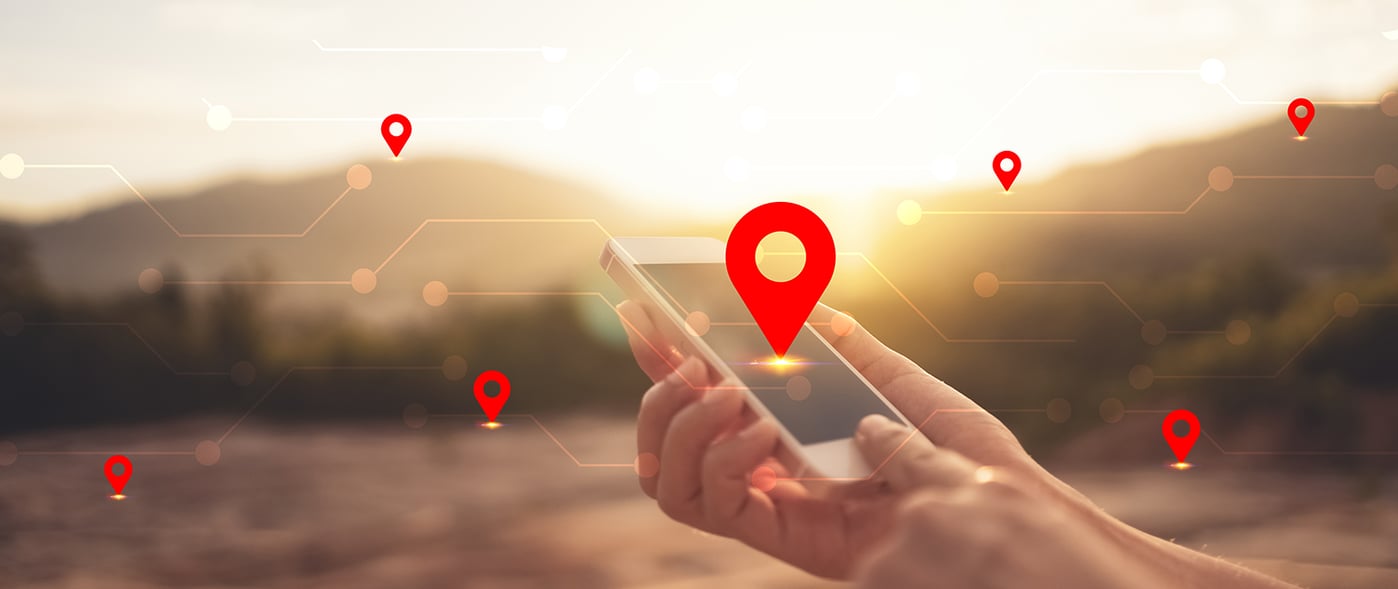Unlocking the Advantages of Digital Mapping
for Attractions.
Discover the benefits of incorporating digital mapping technology in the attractions industry and how it can enhance visitor experiences.
As attractions globally shift from paper to digital maps in a bid to embrace sustainability, we delve into the critical aspects that make a digital attraction map effective and user-friendly.
The traditional paper maps, though familiar, fall short in environmental sustainability, given their high volume of production and disposal issues. Digital maps, accessible via web browsers or mobile apps, present a greener, cost-effective alternative. However, their effectiveness hinges on more than just digital presence. Quality and functionality are paramount, as a subpar digital map can detract from the overall guest experience.
This guide outlines the benefits and essential features to consider when choosing a digital mapping solution for your attraction, ensuring that your digital transformation enhances guest experience while supporting sustainability goals.
Enhancing Visitor Navigation and Wayfinding
Digital mapping technology plays a crucial role in enhancing visitor navigation and wayfinding within attractions. With interactive maps and real-time updates, visitors can easily find their way around the attraction, locate specific points of interest, and navigate through complex layouts. This not only improves the overall visitor experience but also helps to reduce visitor frustration and increase visitor satisfaction.
Moreover, digital maps can provide additional features such as turn-by-turn directions, highlighting popular attractions or points of interest, and suggesting optimised routes based on visitor preferences. This ensures that visitors can make the most of their time at the attraction and easily find their way to the attractions they are most interested in.
By incorporating digital mapping technology, attractions can create a seamless and intuitive navigation experience for visitors, making their visit more enjoyable and stress-free.
Improving Operational Efficiency
Digital mapping not only benefits visitors but also improves operational efficiency for attractions. By digitising maps and integrating them with other operational systems, attractions can streamline their processes and eliminate manual tasks.
For instance, staff members can use digital maps to efficiently locate and assign tasks to their colleagues, reducing the time spent on communication and coordination. Additionally, digital maps can provide real-time information about the status of different areas within the attraction, allowing staff members to proactively address any issues or bottlenecks.
Furthermore, digital map software can assist in optimising resource allocation and scheduling. Attractions can analyse visitor flow patterns and use this data to make informed decisions about staffing, queue management, and facility utilisation. This not only improves the overall operational efficiency but also helps attractions to provide better services to their visitors.
Personalising Visitor Experiences
Mapping technology enables attractions to personalise visitor experiences and offer customised recommendations. By collecting and analysing visitor data, attractions can gain insights into visitor preferences, interests, and behaviours.
With this data, attractions can create personalised maps and itineraries for individual visitors, suggesting attractions, shows, or activities that align with their interests. This not only enhances visitor satisfaction but also increases the likelihood of visitors exploring more areas of the attraction and spending more time and money on-site.
Furthermore, attractions can use digital maps to offer personalised promotions, discounts, or loyalty rewards based on visitor preferences and behaviours. This creates a more personalised and engaging experience for visitors, fostering a stronger connection between the attraction and its visitors.
Optimising Marketing and Promotion
Digital mapping provides attractions with valuable insights that can be used to optimise marketing and promotion efforts. By tracking visitor movement patterns and analysing data, attractions can identify popular attractions or areas that may require additional marketing attention.
Attractions can use digital maps to strategically place concessions and other retail facilities in high-traffic areas, ensuring maximum visibility and exposure. Additionally, digital maps can be integrated with marketing campaigns, allowing attractions to provide targeted recommendations or offers to visitors based on their current location within the attraction.
Moreover, attractions can leverage mapping technology to gather feedback and reviews from visitors, enabling them to make data-driven decisions regarding marketing strategies and improvements to the overall visitor experience.
Collecting and Analysing Data for Better Decision-Making
One of the key advantages of digital mapping is the ability to collect and analyse data for better decision-making. Attractions can gather valuable insights about visitor behaviour, preferences, and trends by analysing data from digital maps.
By understanding visitor flow patterns, attractions can optimise their layout and operations to improve visitor flow and reduce congestion. Attractions can also identify areas that are underutilised and make informed decisions about adding new attractions or amenities.
Furthermore, attractions can use data from digital maps to measure the effectiveness of marketing campaigns, track visitor satisfaction levels, and identify areas of improvement. This data-driven approach allows attractions to make data-backed decisions and continually enhance the visitor experience.
Here are ten crucial features that make a digital attraction map stand out:
Interactive Points of Interest: These maps should go beyond basic navigation, offering interactive, content-rich information about various attractions. This includes live updates on events, queue times, and unexpected closures, providing an engaging and informative overview of the park. For instance, users could click on an attraction to see current wait times or scheduled showtimes.
Accessibility Options: Digital maps need to be inclusive, offering features for guests with disabilities. This includes options for highlighting accessible routes, facilities that are wheelchair or stroller friendly, and features like audio descriptions and easily readable text for those with visual or cognitive impairments.
Accuracy and Reliability: Precision in mapping is critical. The maps must accurately represent the park's layout, with real-time location tracking capabilities. They should utilise GPS functionality that functions independently of Wi-Fi, ensuring guests can reliably find their way.
Direct Navigation to Entrances: It's important for maps to guide guests not just to the vicinity of an attraction but to specific entrance points. This detailed plotting and real-time direction aid significantly reduces visitor confusion and improves the overall experience.
User-Friendly Orientation Tools: The ability to rotate, zoom, and interact with the map is essential for effective spatial orientation. This functionality helps users to align the map with their physical surroundings, aiding in navigation and spatial understanding.
Real-Time Updates: Integrating real-time updates can greatly enhance visitor experience. Guests can plan their activities based on up to the minute information, making decisions on where to go next, or what to do.
Interactive Event Scheduling: Visitors should be able to view and interact with a schedule of events happening in the park. This feature could include options to set reminders for shows or parades, helping guests to manage their time effectively and not miss out on key attractions.
Multilingual Support: To cater to an international audience, digital maps should offer content in multiple languages. This inclusivity ensures that non-native speakers can navigate the park with ease, understanding descriptions and instructions in their preferred language.
Offline Functionality: Considering connectivity issues in large parks, maps should be accessible offline. This ensures that visitors can continue to navigate the park even in areas with poor or no internet connection.
Behavioural Data Insights: Digital maps can be integrated with data analytics to provide insights into visitor behavior, like most frequented paths and less popular areas. This information can inform future park improvements and operational strategies.
In summary, a digital attraction map is more than just a digital representation of a physical map; it's an advanced, interactive tool that can significantly enhance the visitor experience. By incorporating these ten essential features, attractions can ensure their digital maps are not only a tool for navigation but also an integral part of the overall visitor journey, enriching the experience and providing invaluable operational insights.
To find out more about our digital mapping functionality why not Request a Demo.

/Blog/Authors/PHOTO-2022-05-06-14-05-59.jpg?width=90&name=PHOTO-2022-05-06-14-05-59.jpg)



